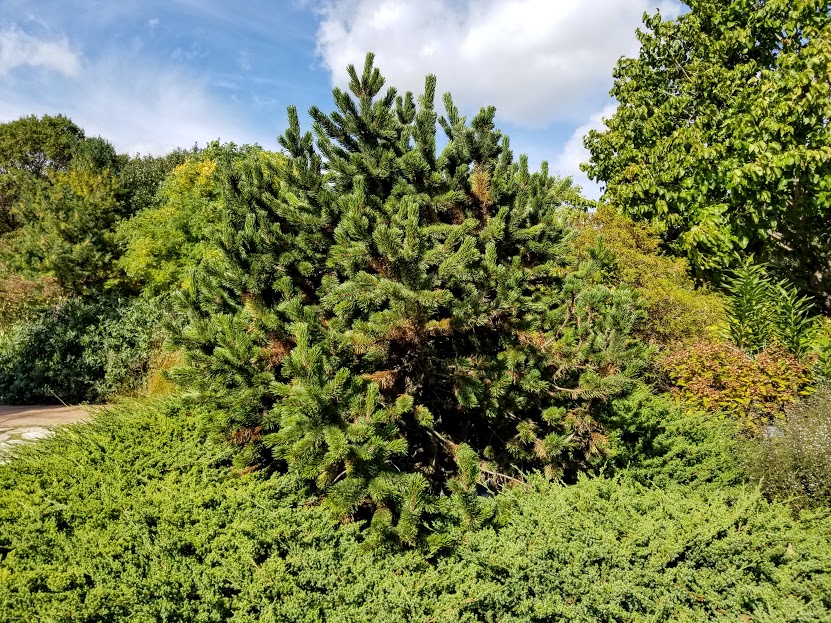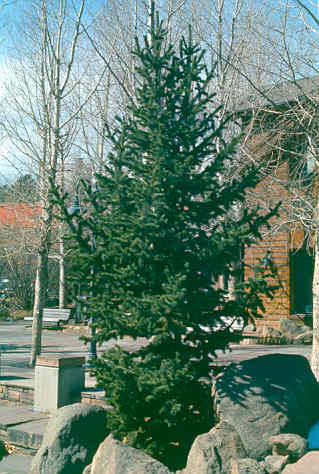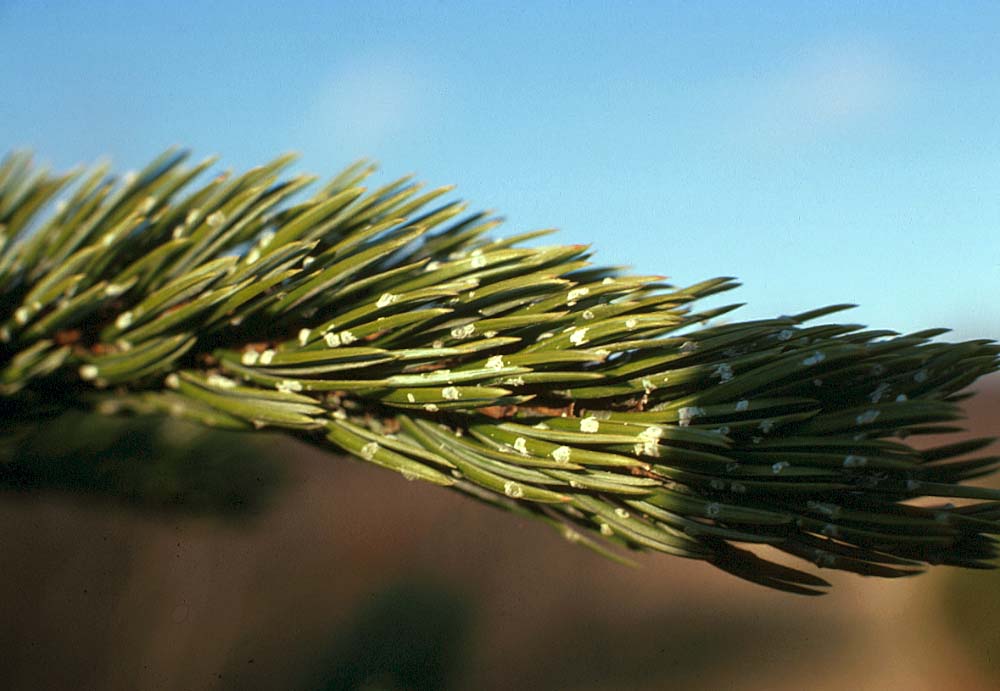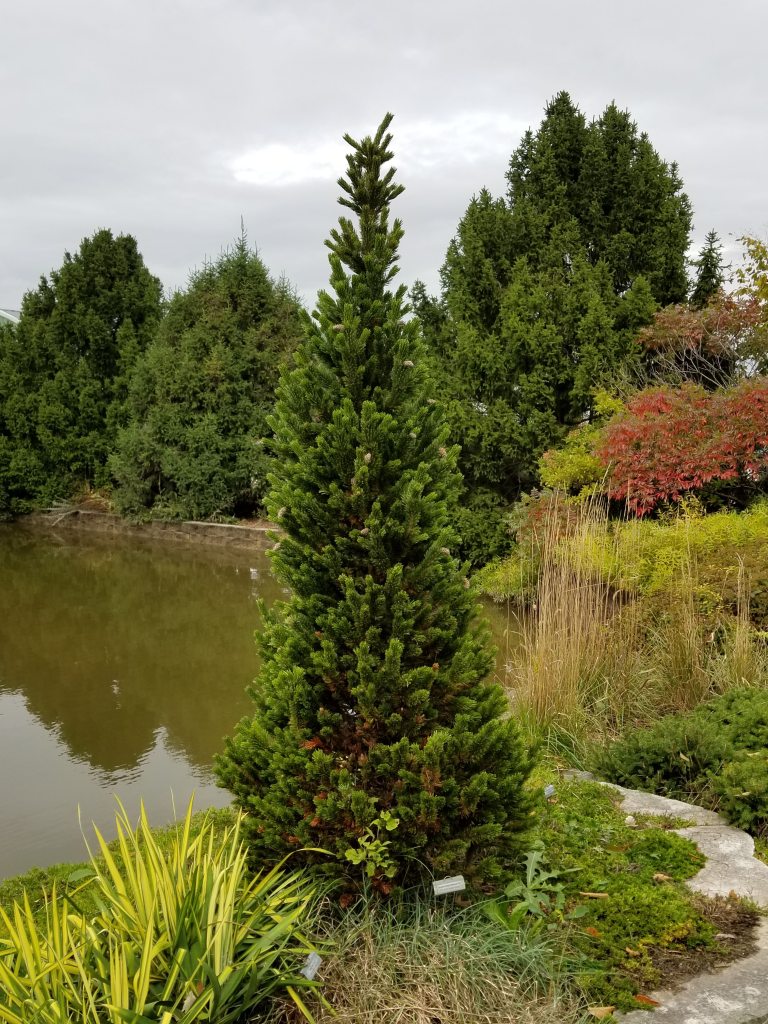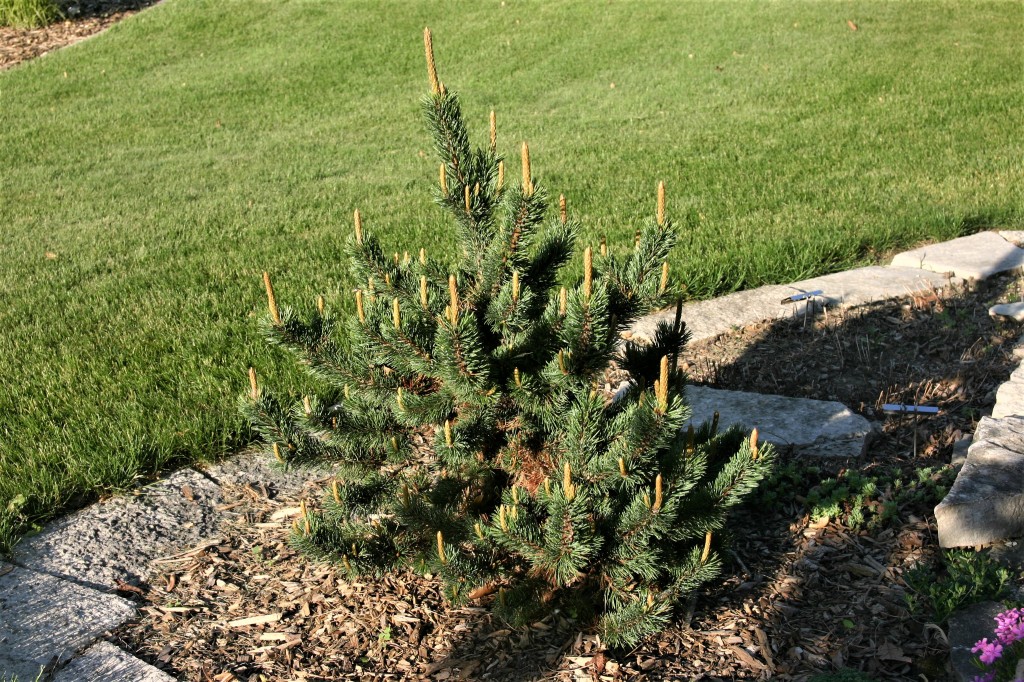What once was one species has now been divided into two. Pinus aristata is the Rocky Mountain Bristlecone Pine and is found at elevations of 7500 to 12,000 feet in Colorado, New Mexico, and Arizona. Pinus longaeva, called the Great Basin Bristlecone Pine, grows in California, Nevada, and Utah at heights of 5600 to 11,000 feet. The two were separated in 1970.
Pinus aristata is a picturesque tree with an irregular form that grows to 40 feet in the wild but rarely exceeds 20 feet in cultivation. Growth rate is very slow. The stout, slightly curved needles are in groups of five and up 1-3/4 inches long, short for a pine. Gummy white resin dots speckle the blue green leaves. Needles persist for 14 to 17 years, resulting in a foxtail appearance. Cones are three to four inches long and have a bristle-like prickle on each scale.
Both species of Bristlecone Pine grow on dry, gravely mountain slopes in full sun. Excellent drainage is critical. The tree will deteriorate quickly with wet feet. Despite the harsh conditions under which it grows, specimens have been shown to survive for over 2000 years.
Pinus longaeva goes one step better. Some plants growing in the “Methuselah Walk” in the White Mountains of California are over 5000 years old, the oldest living plants on earth. They’re able to survive by coating their bark with resin and protecting a live strip of phloem on the side of the plant shielded from the wind.
The most widely available cultivar is ‘Sherwood Compact.’ It a narrow conical form of P. longaeva. Other cultivars are most likely selections of P. aristata. All are dwarf selections propagated from witches brooms. ‘Cecilia’ has a dense, round form. ‘Lemon Frost’ has gold to yellow-green foliage, especially in winter. ‘Cheery’ grows less than an inch a year and has a bun-like form. ‘Bashful’, part of the seven dwarfs series found by Jerry Morris on a plateau near South Park, CO, has a compact, upright form.
I’ll have to admit that I’ve killed a Bristlecone Pine or two by not planting it on a site with good enough drainage. Now I make sure it is on a well-drained slope. Few plants match Bristlecone Pine as an eye-catcher and low maintenance specimen. That’s why it is one of my favorite plants.

